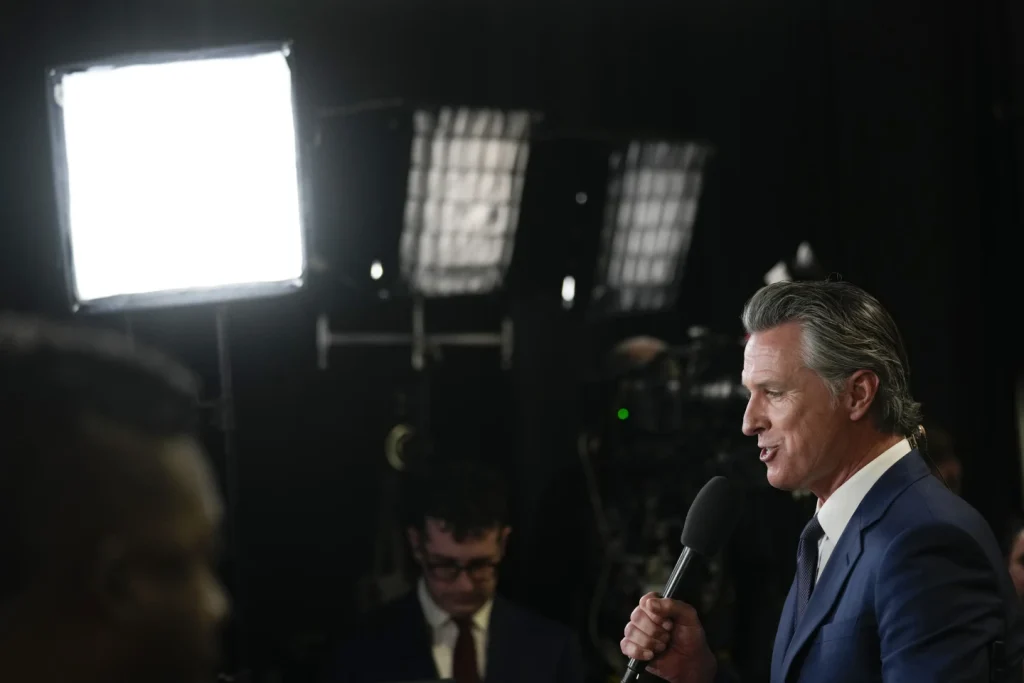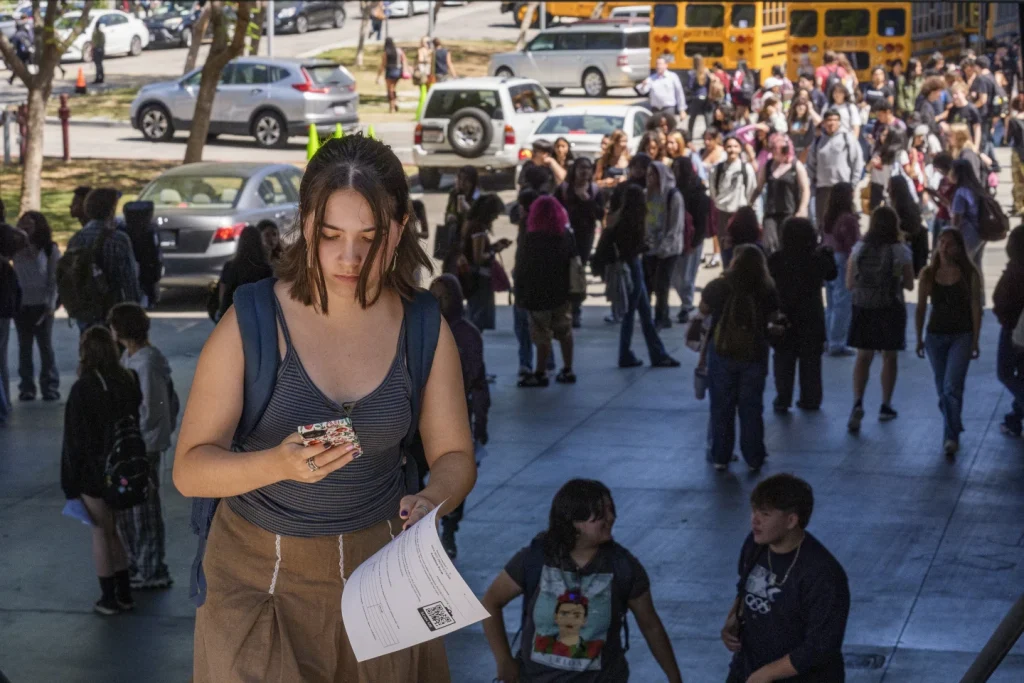In an era defined by rapid technological advancement and the pervasive influence of social media, concerns regarding the impact of smartphones on the education and mental health of students have become increasingly pronounced.
In response to these concerns, California has adopted a significant legislative measure aimed at regulating student smartphone use within schools.
This new law, signed by Governor Gavin Newsom, mandates that school districts across California establish rules to restrict or ban smartphone use on campus, thereby positioning the state within a national trend aimed at addressing distraction in classrooms and the associated mental health implications of social media.
Governor Newsom’s endorsement of this legislation comes in the context of a growing national recognition of the battleground that is the modern educational landscape, where traditional teaching methods intersect with the ever-present distractions of digital technology.
California’s initiative mirrors similar efforts in states such as Florida, Louisiana, and Indiana, all of which have implemented regulations designed to mitigate distractions caused by smartphones in educational settings.
By acknowledging the need for a structured approach to smartphone use in schools, California is making a statement about prioritizing academic focus, social interaction, and the overall well-being of students.
In his public statement regarding the new law, Governor Newsom articulated a clear objective: to foster an environment where students are encouraged to engage with their academic subjects and their peers without the constant distraction of screens.
The legislation is framed as not merely an attempt to enforce discipline but as an essential strategy for promoting healthier social development among youth.
While the motivations behind the law appear commendable, the execution and implications of such policies invite critical scrutiny.
Despite the intent behind these regulations, several concerns have been raised by educators, parents, and stakeholders in the educational community.
One significant point of contention is the assertion that the responsibility of enforcing smartphone restrictions should fall on teachers.
Critics argue that educators are already tasked with a plethora of responsibilities, and adding phone enforcement to their duties may lead to increased stress and dissatisfaction within the profession.
Teachers, already grappling with diverse classroom needs, might find it challenging to manage electronic device policies effectively while ensuring a conducive learning environment.
Furthermore, apprehensions persist regarding the safety implications of restricting smartphone access, particularly in emergency situations.
Recent incidents, such as the tragic shooting at a Georgia high school, have intensified discussions around the necessity of having immediate communication tools available for students.
Parents raised concerns that bans on phone usage might hinder their ability to connect with their children during crises.
Although prior legislation has included provisions exempting emergency situations from such bans, skepticism remains about the practicality of enforcing these nuances in real-life scenarios.
Another notable argument against the recent legislation is the call for local decision-making. Many educational stakeholders, represented by voices such as Troy Flint from the California School Boards Association, have highlighted the importance of allowing individual districts the autonomy to craft policies that best reflect their unique circumstances and the specific needs of their communities.
By mandating statewide restrictions, critics assert that the law disregards the variations in school culture and community values that might influence the efficacy of such policies.
The argument for local autonomy is often rooted in the belief that engagement with stakeholders at the community level, including parents, students, and teachers, is imperative for enacting policies that resonate with the lived experiences of those directly affected.
While the intent of creating a standardized approach to smartphone usage is to address widespread concerns, the imposition of such regulations may overlook the diversity within school environments that could benefit from tailored solutions.
A pivotal aspect of the discussion surrounding smartphone restrictions in schools is the acknowledgment of digital addiction among the younger generation.
The average student today is inundated with notifications, messages, and the constant allure of social media platforms, which can lead to significant distractions in academic settings.
Assemblymember Josh Hoover, who played a vital role in the bill’s introduction, has emphasized that distracting behaviors arising from smartphone use hinder students’ ability to focus effectively on their studies and develop meaningful social interactions.
In light of these distractions, schools enforcing restrictions on smartphone use could potentially cultivate a more engaged classroom atmosphere.
Evidence presented by school officials, such as those from the Santa Barbara Unified School District, suggests that past implementations of smartphone bans correlate with increased student participation and attention during lessons.
The case of Los Angeles Unified School District further exemplifies this trend, showing a gradual shift in student behavior towards greater academic engagement in the absence of mobile devices.
In an era marked by rapid technological advancement and an unprecedented emphasis on digital learning modalities, educators have increasingly acknowledged the necessity of integrating technology into the educational framework, thus enhancing student engagement and accommodating diverse learning styles.
Mara Harvey, a dedicated social studies teacher at Discovery High School within the Natomas Unified School District, articulates this growing reliance on technology by highlighting the district’s provision of Chromebooks to students from the first to twelfth grade, facilitating seamless access to essential educational resources, such as online textbooks and the widely used Google Classroom platform.
However, in instances where students inadvertently leave their Chromebooks at home, the ability to resort to smartphones as an alternative means of accessing the curriculum underscores the imperative adaptability within this contemporary learning landscape.
This adaptability is further echoed in the remarks of McFall, who emphasizes the importance of establishing a structured practice of temporarily disconnecting from devices, suggesting that this intentional break from technology has yielded significant benefits for both educators and students alike.
The duality of reliance on technology while concurrently encouraging moments of disconnection presents a compelling paradigm for modern pedagogy, inviting educators to navigate the delicate balance between fostering technological proficiency and promoting cognitive engagement devoid of electronic distractions.

California’s new legislation on smartphone use in schools seeks to strike a balance between minimizing distractions and addressing the mental health challenges posed by social media.
While the intent of enhancing educational focus and fostering social development is commendable, apprehensions regarding enforcement, emergency communication, and local autonomy cannot be overlooked.
As the law rolls out, it will be crucial for educational leaders, parents, and policymakers to continue the dialogue on the implications of smartphone use in educational settings.
Ultimately, the effectiveness of this legislation will hinge on how well it is implemented, adapted to local contexts, and perceived by the very students it aims to protect.
As technology evolves, so too must the approaches taken by educational institutions to engage with these challenges, ensuring that students can thrive in both their academic environments and their broader social interactions.
